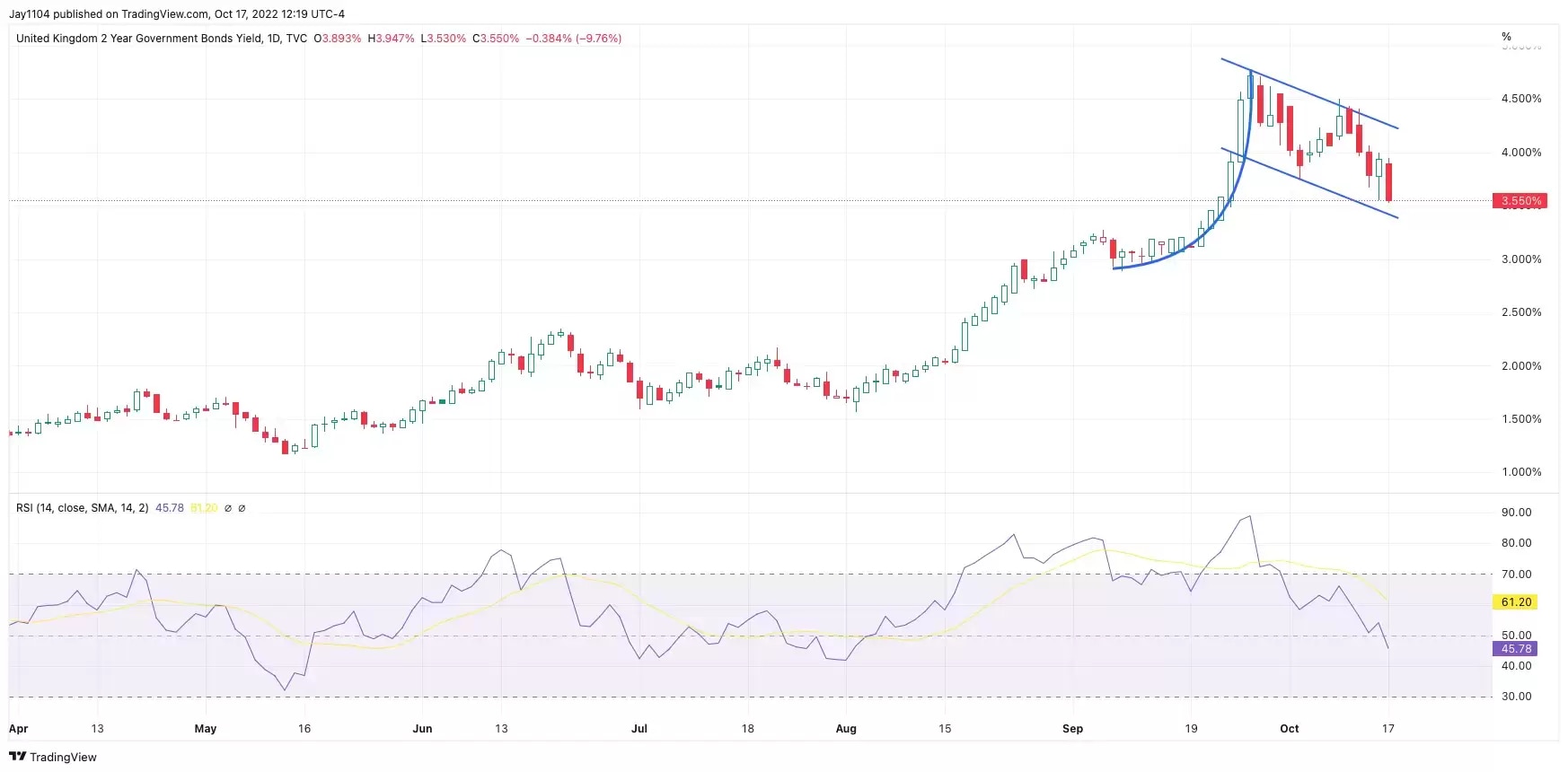Inflation will continue to be a global macro headwind through the remainder of 2022 and into next year. Most signs suggest inflation will be a persistent problem, with little indication that it will slow down significantly in the near term. US consumer prices rose more than expected in September, and the University of Michigan survey showed a big jump in inflation expectations in the preliminary reading.
On Wednesday, it’s the UK’s turn to release its inflation data for September. The numbers may take on extra importance, given the recent volatility in the UK bond market. The UK consumer price index (CPI) is expected to have increased 10% year-on-year and 0.4% month-on-month in September, based on consensus estimates compiled by Bloomberg. Core CPI, which strips out volatile food and energy prices, is predicted to have increased 6.4% year-on-year.
Inflation is a global problem
The University of Michigan, instead of showing that consumer expectations of future inflation rates are falling, was higher for the first time since March. The one-year inflation expectation has risen to 5.1% from last month's reading of 4.7%. Meanwhile, the five to 10-year inflation outlook jumped to 2.9% from 2.7%.
If UK CPI for September comes in at the anticipated 10%, it would mark a slight acceleration on August’s 9.9% inflation rate and a return towards the July peak of 10.1%. If the September reading exceeds the July figure, it would undoubtedly shock the UK bond market. That could ripple out to the global bond market.

UK two-year yields could head towards 5%
The UK two-year rate has exploded higher in recent weeks on concerns over the mini-budget and the prospect that the Bank of England may raise rates further. Now that Liz Truss’ economic plan has been ripped up, the market can shift its attention to a potentially hotter-than-expected CPI report.
The two-year rate in the UK could be heading higher, especially if the overnight index swap (OIS) curve is right. Right now, the two-year OIS is forecasting a Bank of England target rate of 4.8%, and if inflation rates do not start to come down, that OIS curve could shift higher.

If there were to be a shift higher in the OIS curve, it would result in the UK two-year rate rising from its current level of around 3.6%. The technical chart is in agreement and also indicates that the two-year rate could be heading higher. Currently, there appears to be a bull flag technical pattern, indicating that UK two-year yields could be set to move up to around 5%. A hotter CPI print and the expectation of more rate hikes from the Bank of England could make such a move higher possible.

Such a jump in UK rates due to hotter-than-expected inflation data would certainly feed through to rates globally, with US rates not being immune.
Teslashares at pivot point pre-earnings
Meanwhile, Tesla will report third-quarter results on Wednesday. Analyst forecasts suggest that the company will report earnings of $1.01 per share and revenue of $22.52 billion. The stock has performed poorly since the electric vehicle maker reported weaker-than-expected third-quarter deliveries, disappointing investors.

Tesla failed a crucial resistance level around $313, forming what appears to have been a triple-top pattern. Additionally, it broke a technical uptrend at the end of September. The shares are trading just above a critical support level around $209. That technical support level is crucial because it has held since July 2021. If it should break, it could result in the shares plunging to about $181. If it should hold, the stock can fill a gap up to around $260 that was created following Tesla's miss on third-quarter vehicle deliveries.
Since Tesla doesn’t give guidance, the Q3 results will likely determine which way the stock moves in the near term.






